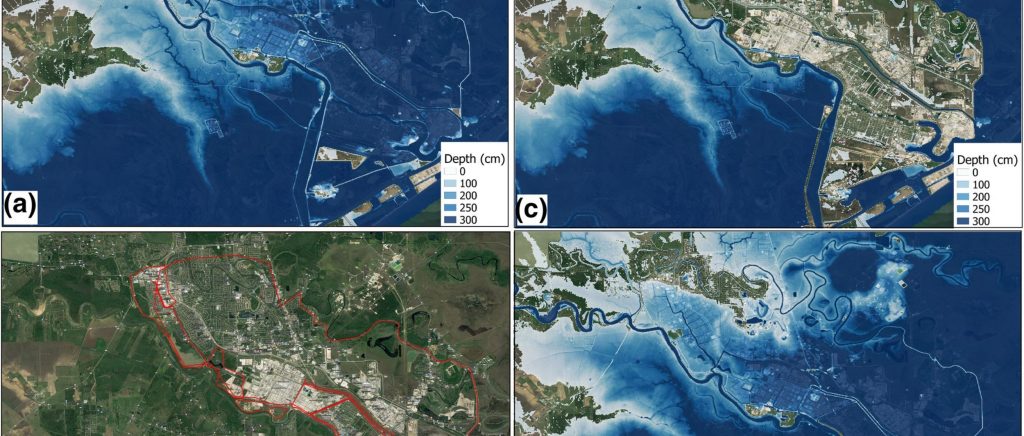Paul Bates et al’s latest paper explores the methodology and science underpinning Fathom-US 2.0.
Following the launch of our latest US flood model in September, a team led by Professor Paul Bates have published a paper exploring the methodology underpinning Fathom-US 2.0. Combining fluvial, pluvial, and coastal flood perils, the model offers predictions for both present and future climate conditions.
The model is a culmination of research by leading experts within the fields of hydraulics, hydrology and climate. The data are the first to explicitly represent every river channel within the US, and provide easily accessible and understandable flood risk data to the public through a free online tool called Flood Factor. This is unprecedented for the US, an area that is estimated to be hardest hit by climate change.
The paper investigates Fathom-US 2.0’s incorporation of climate scenarios alongside its ability to model both high and low-frequency events. The result is the first comprehensive and consistent national‐scale analysis of flood hazard for the conterminous US for both current and future conditions. Professor Bates commented, “This work is a true team effort from thirty of the world’s leading flood scientists and represents a step-change in our ability to model flood hazard at continental scales”.
The later sections of the paper explore the extensive validation of the model. Perhaps most encouragingly, we compare our model against data from FEMA and the Iowa Flood Center and find that there is a good match across all return periods. Equally, similar results were found when replicated against National Flood Insurance Program claims data.
This is a major paper for our organisation and evidences the ever-growing skill of the models that we pioneer.








